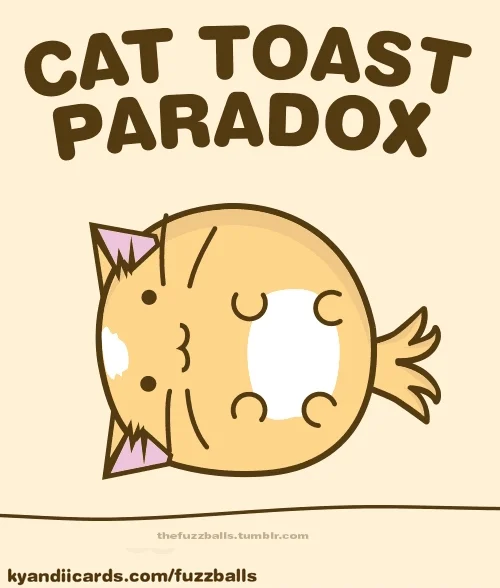Ever heard of the buttered cat paradox? The buttered cat paradox is a humorous thought experiment which combines two common adages: While you may think it’s an urban legend, experiments have shown 81% of the time buttered toast lands on the floor butter side down. Also, a phenomenon known as the cat righting reflex has…









